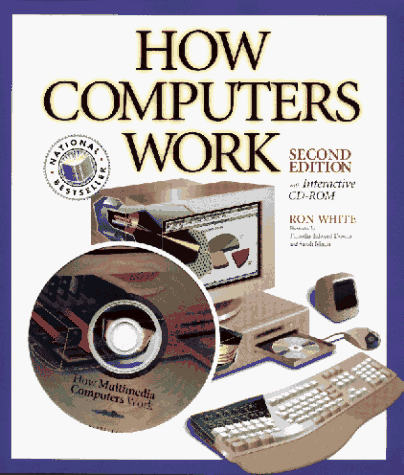This edition of How Computers Work, 2nd Ed. includes the full-fledged software: How Multimedia PC's Work CD-ROM. The CD-ROM contains stunning 3D animations that take you inside the computer. The CD covers the latest on chips from Intel, gives you in-depth discussions of CD-ROM drives, sound cards, video cards, LCD monitors, and much more--covering every aspect of multimedia PC's.
Sometimes you have to take a step back from "choose this, click that" computer books and survey the technologies that underpin the personal computers we use every day. We all know how to connect to the Internet, but few of us really know how a modem works. It's broadly understood that data written to a hard disk sticks around when the power goes off and data in RAM is lost--but why? Author Ron White and illustrator Timothy Edward Downs explain these and hundreds of other aspects of PC tech in
How Computers Work. A typical spread tackles a single PC detail, such as uninterruptible power supplies or scanners, with one or more large, full-color drawings of the equipment in question and a series of detailed callouts that explain what different parts do. Where there's a process (such as the one behind optical character recognition), White and Downs present a series of illustrations and sequential bits of explanatory text. Plus, there's lots of historical information and speculation on technologies to come.
Will it help you get more work done with your computer? No. Will it enable you to do things you couldn't do before? No. Rather, How Computers Work will help you understand in a broad sense what's going on when you tap the keys, click the mouse, and set software to work. Reading White's sharp prose and examining Downs's sparkling illustrations won't make you qualified to work as a computer repair technician (refer to detail-laden tomes like Scott Mueller's Upgrading and Repairing PCs and Mark Minasi's The Complete PC Upgrade & Maintenance Guide for that). This book will, however, make you a more informed computer user. You'll have a better idea of what's going on inside the beige enclosure. --David Wall
Topics covered: Processors, random-access memory (RAM), expansion cards, modems, persistent storage devices (such as hard disks and Zip disks), digital cameras, printers, networks, and the basics of the Internet.
